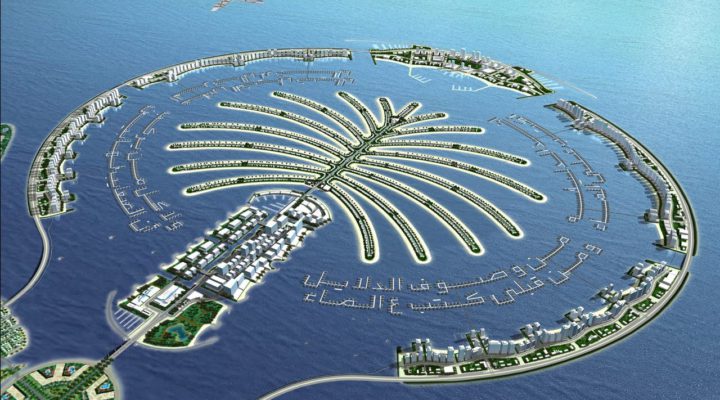WORLD’S LARGEST CRUISE LINER- Independence Of The Seas Full Documentary //**12-41
4300 guests live in 5-star luxury, they can shop in a 130 meter long mall, ride a surf simulator and enjoy a show in a 1000 seat theatre. It’s 18 stories high and it floats. And it’s launched in 2008 the 160’000 ton «independence of the Seas» is the biggest passenger ship in the world and the pinnacle of marine engineering.
Our very existence is the result of over 150 years of engineering evolution. Five groundbreaking leaps made by five key ships. At the heart of each lays a breakthrough that fuels the unstoppable growth of the cruise liner. One by one travelling up the scale will reveal the incredible stories behind these vessels.
And the inventions that made each one bigger than the last, five ingenious leaps forward from big to bigger … into the world’s biggest.
San Juan Puerto Rico. Passengers are boarding the «Independence of the Seas» for a week-long luxury cruise. For many the three thousand kilometer trip through the Caribbean is a once-in-a-lifetime experience. For captain Theo Stratichish who takes the helm today this isn’t a bad place to work either.
- It’s passenger ship that you can describe as a huge city, moving at speed of 22 knots across the oceans, being driven from the place that looks like Starship Enterprise commande bridge, so it’s very interesting place to work.This voyage will take the Independence of the Seas to some of the most glamorous destinations in the world. But for many passengers this huge floating luxury resort is a destination in itself. To understand how she can claim her place is the biggest cruise ship ever built we must travel back in time. Our journey begins in Victorian Britain with an engineering genious and his landmark ship the 1300 tone Great Western.LEAP 1: CONSTRUCTION.
At the hight of the Industrial Revolution steam powered machines are transforming the world.One visionary engineer is about to use a steam machine to shrink it.
Isambard Kingdom Brunel is a colossus of the railways. Nothing can stay in his way as he blazed a trail of iron across Britain. His masterpiece the Great Western Railway stretches all the way from London to Bristol, a port that opens onto the Atlantic. Where it seems Brunel’s Great Western Line can go no further. But in 1835 during a railway company board meeting, who now has a brainwave, as historian Anthony Burton explains. - Why stop there? Why not build a steamer and go across the Atlantic to New York? Everybody thought he was mad, but one of the directors didn’t, he came out to Isambard and said ‘let’s do it and form the Great Western Steam Ship Compay.’At that time the only ships that cross the Atlantic are powered by wind. The journey can take up to two months depending on the weather. So Brunel decides to build a ship powered by steam to make the crossing much quicker. His Great Western steamship leads 650 tones of coal for the Atlantic crossing. To hold this much coal Brunel must make his ship 72 meters long.
- The Great Western was going to be the biggest wooden ship ever built. And as a problem with wooden ships out at sea — if they sit on top of a wave then the ends tend to droop, if this in between waves the middle starts to drew.If Brunel builds such a huge ship from wood alone, it’s how won’t be stiff enough to cope with big waves. It would bend, twist and eventually break.
- So it needs to be made rigid. So Brunel turned to a material he knew very well from his work on the railways. He turned to iron. Brunel bolts a lattice of iron girders to the inside of his wooden ship. This forms a rigid skeleton that stiffens the hull. Brunel’s Great Western is now fully braced for her first encounter with the Atlantic Ocean.
Not only does she withstand the crossing, but on the 23rd of April 1838 she arrives in new York after just 15 days, that’s twice as fast as a sailing ship.
The Great Western completes Brunel’s grand vision of a single steam-driven transport line, stretching from London to America. - The success of the Great Western was an important event in the history of seafaring. It proved all the doubters wrong, and it showed one thing above all — big was best.The Independence of the Seas takes the idea that big is best to the extreme. This giant is 120 times bigger than Brunel’s Great Western. She’s longer than three football pitches placed end-to-end, and weighs as much as 430 jumbo jets. Building such a great ship is far from straightforward.
Construction starts in 2006 in Finland at one of the largest shipyards of the world.Instead of iron and wood the Independence’s hull is built from steel, 32000 tones of it. But simply using a lot of steel doesn’t necessarily guarantee a strong structure. Like the Great Western the key to her strength is the way that the building material s arranged as engineer Ed McCann demonstrates. - It’s one of the principles of the structural engineering, that material works better if you put it in the right place, and to demonstrate this simple fact I have here a piece of folded up cardboard spanning between these two here, and let’s see how good it is carrying blocks, and if I pop this on, there we’ll see what happens now, and through she goes. So, I’ve taken the sheet of cardboard that we were just looking at, and I’ve made it into a different shape — a shallow box. There it is, I’m going to get myself my concrete blocks. We had two on last time, there’s one, first of all you can see it doesn’t deflect anything, like as much as it did last time. There’s another one, so it’s taken two now, last time two fell straight through to the floor, see if it’ll take three. We’ve got three on there.
What you’re seeing here is that we can double the load carrying capacity of this sheet of cardboard simply by organizing the material and putting it in the right place.To make those ships strong designers, working on the Independence of the Seas, also form their steel into rigid boxes over 170. Each box is up to 32 metres wide and 22 metres long. Engineers build the boxes in huge hangars, where they paint them and install wiring and plumbing. Then they transport them to a dry dock for final assembly. Workers use cranes to stack the massive boxes together like a giant 3d jigsaw puzzle. They use hydraulic jacks to align them precisely. Workers then weld them together to create a rigid honeycomb of boxes. This makes the structure strong enough to withstand the pounding of the biggest waves in the heaviest seas. But the box construction isn’t just about strength. The sides of the boxes line up to form continuous walls, that run from the bottom of the ship to the top. They are called ‘bulkheads’, and they form barriers that mean if the hull is breached in one section water won’t penetrate the rest of the ship.
Oleh Peterson is the ship’s chief engineer: - The ship is devided into watertight sections below the waterline, and this one here is a watertight door, which partitions the ship into watertight sections. In addidtion to that, these doors are also installed in very rigid bulkheads, such that, if we have one compartment //**12-41




